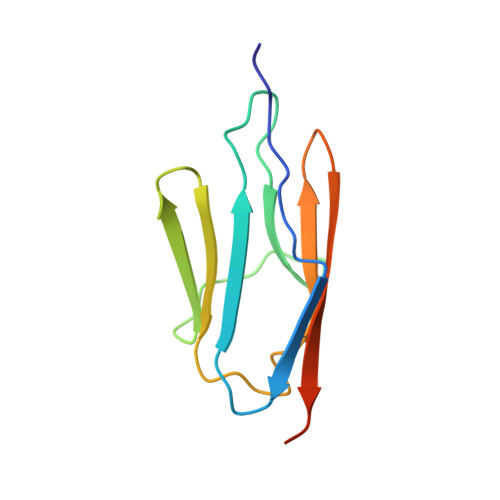Obscurin is a semi-flexible molecule in solution.
Whitley, J.A., Ex-Willey, A.M., Marzolf, D.R., Ackermann, M.A., Tongen, A.L., Kokhan, O., Wright, N.T.(2019) Protein Sci 28: 717-726
- PubMed: 30666746
- DOI: https://doi.org/10.1002/pro.3578
- Primary Citation of Related Structures:
6MG9 - PubMed Abstract:
Obscurin, a giant modular cytoskeletal protein, is comprised mostly of tandem immunoglobulin-like (Ig-like) domains. This architecture allows obscurin to connect distal targets within the cell. The linkers connecting the Ig domains are usually short (3-4 residues). The physical effect arising from these short linkers is not known; such linkers may lead to a stiff elongated molecule or, conversely, may lead to a more compact and dynamic structure. In an effort to better understand how linkers affect obscurin flexibility, and to better understand the physical underpinnings of this flexibility, here we study the structure and dynamics of four representative sets of dual obscurin Ig domains using experimental and computational techniques. We find in all cases tested that tandem obscurin Ig domains interact at the poles of each domain and tend to stay relatively extended in solution. NMR, SAXS, and MD simulations reveal that while tandem domains are elongated, they also bend and flex significantly. By applying this behavior to a simplified model, it becomes apparent obscurin can link targets more than 200 nm away. However, as targets get further apart, obscurin begins acting as a spring and requires progressively more energy to further elongate.
Organizational Affiliation:
Department of Chemistry and Biochemistry, James Madison University, Harrisonburg, Virginia, 22807.














